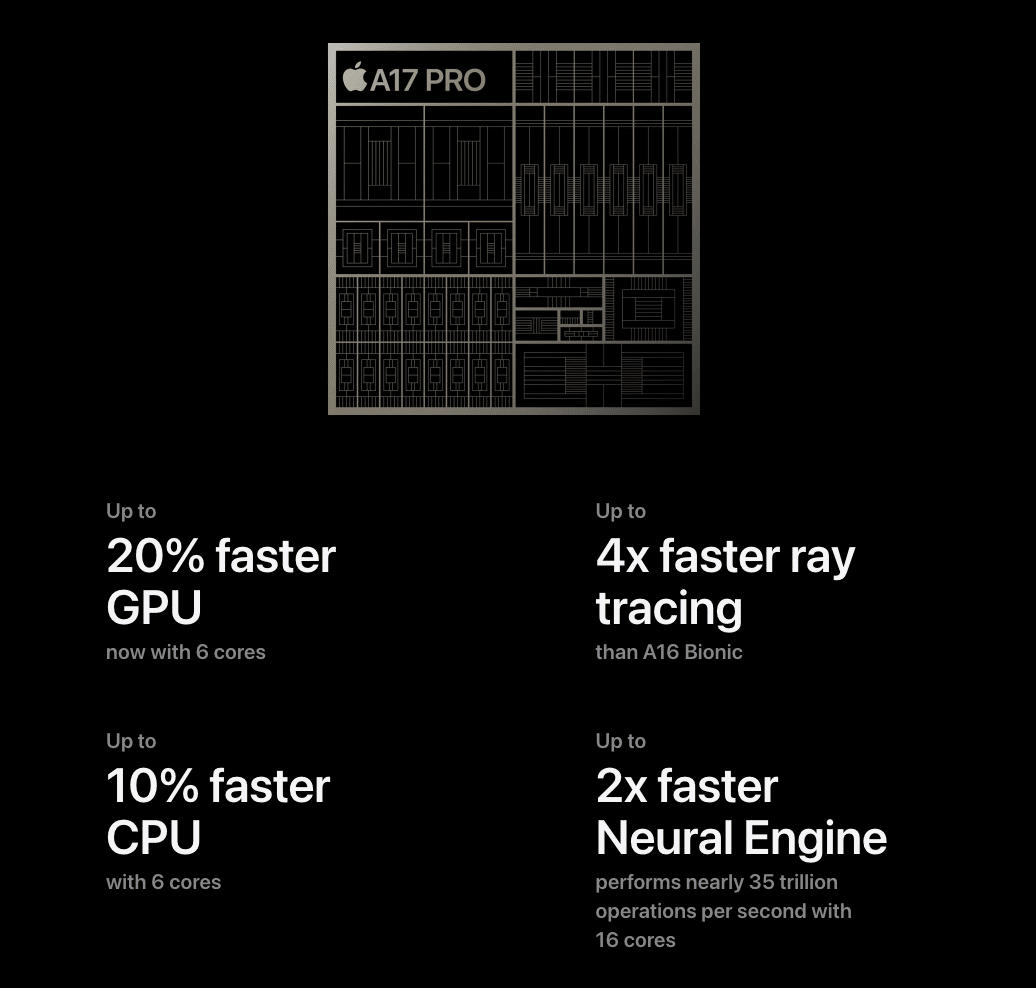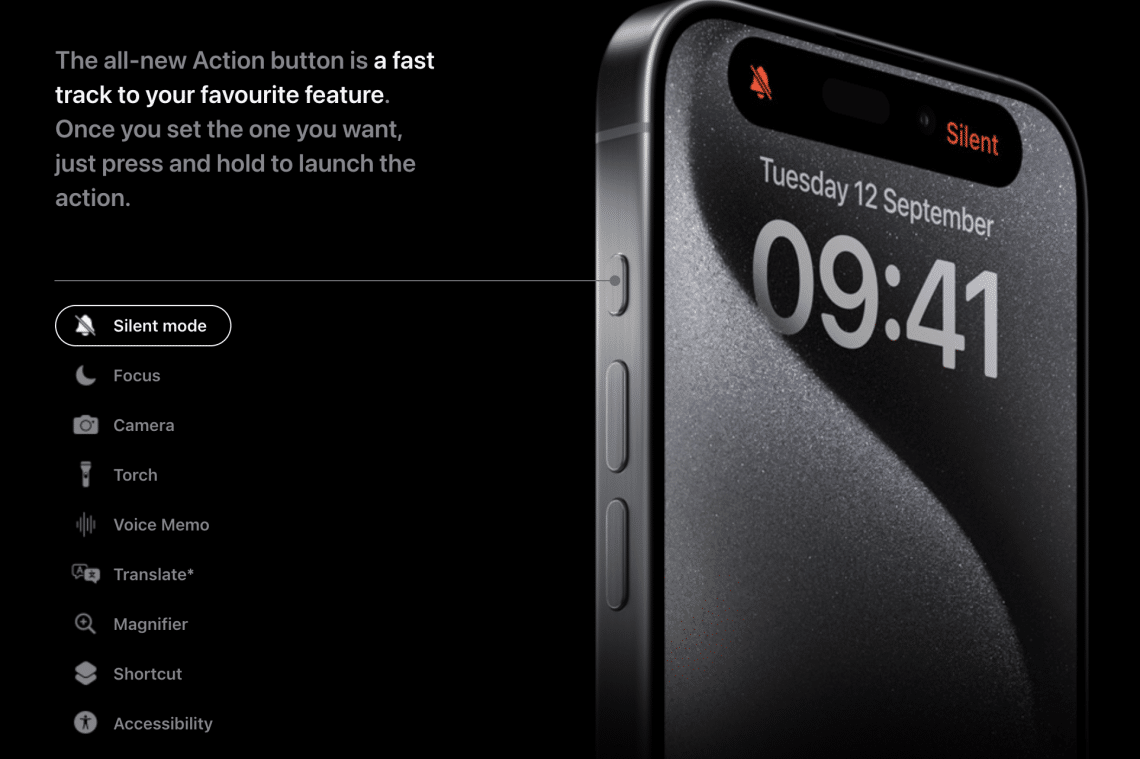Everything you need to know about the iPhone 17.
iPhone 17: A Glimpse into the Future of Apple’s Flagship iPhone 17: A Glimpse into the Future of Apple’s Flagship As the tech world eagerly

Apple unveiled the new devices on Tuesday, including the iPhone 15 Pro and iPhone 15 Pro Max. Last year, the iPhone 14 Pro shone in terms of camera updates and the new display feature called Dynamic Island. Additionally, we received better battery life and a more powerful processor. I wrote a long-term test about the iPhone 14 Pro Max here, but let’s take a look at what we get this year from the iPhone 15 Pro series.

While last year, the camera received significant updates, this year Apple made changes to the design for the iPhone 15 Pro series. We get a new titanium housing, slightly smaller bezels, which means a marginally larger display while keeping the device’s overall size the same. Additionally, the camera has been updated; essentially, they have further improved the iPhone 14 Pro’s camera, and the larger iPhone 15 Pro Max also received a new lens, allowing for a 120mm optical zoom. Furthermore, we have an Action button, an A17 Pro processor, and USB-C support. This is not a bad update on its own, and many people will switch from older devices to this one. Let’s take a closer look at each of the new features.
First and foremost, there’s the new titanium housing. Essentially, it’s a special alloy that NASA uses even on Mars due to its exceptional machinability, durability, and lightweight properties. According to Apple, the device is lighter, and you can feel it. Journalists have already had the chance to hold these devices, and indeed, everyone feels that the new series is lighter. This may signal that we might see more iPhones with titanium housings in the future, perhaps even for iPads.
These are the lightest Pro models ever, making them the lightest devices of recent years. We get new contoured edges with the thinnest bezels of any iPhone, making them even thinner than any other iPhone to date.
The titanium edges have an eye-catching, finely brushed surface, the result of precise machining, polishing, smoothing, and shot peening. With the new curved edges and the slimmest perimeter in iPhone history, it’s even more comfortable to hold.
The titanium edge is attached to the new internal aluminum frame using solid-state diffusion. In an innovative process applied for the first time in the industry, we create an incredibly strong bond between the two different metals.
The internal frame is made entirely from 100% recycled aluminum, contributing to the use of recycled materials in our products and helping achieve our 2030 climate goals.
The new titanium design is available in four colors: Natural Titanium, Blue Titanium, White Titanium, and Black Titanium. Cases and screen protectors are already available on the Smartdiszkont website.
This year, the display remains unchanged, so we get the same display as introduced with the iPhone 14 Pro series, which can reach a brightness of up to 2000 nits in daylight.
The ProMotion technology allows for a variable refresh rate between 10 and 120 refreshes per second. When exceptional graphics performance is needed, it intelligently increases the refresh rate, but at other times, it reduces it to save battery life. Naturally, the always-on display and Dynamic Island are also available here.
I immediately noticed the “Pro” designation, which suggests that next year’s iPhone 16 will not receive this processor but only the A17. This year, we got a powerful processor upgrade from Apple, and it’s quite impressive.
The biggest innovation is in the GPU, the graphics chip, which gains an advantage in certain applications, especially games, but before we delve into that, let’s look at the raw data:

This is the biggest transformation in Apple GPU history so far. The A17 Pro, with its significantly superior graphics performance, opens an entirely new chapter in the history of iPhone chips.
With incredibly detailed environments and even more lifelike characters, mobile games look stunning and are utterly immersive. The A17 Pro’s industry-leading speed and efficiency create a new category of performance.
I’m particularly looking forward to The Division in early 2024, but we already saw with Diablo Immortal how advanced Apple’s mobile game technology is. I just wish Diablo IV had turned out as well. 🤷🏻♂️

The camera of the iPhone 15 Pro Max is like having 7 different lenses (optics) in your hand that you can activate with a single touch. As I mentioned at the beginning of the article, Apple has essentially enhanced the iPhone 14 Pro camera system, and we get some pretty neat upgrades in the zoom range, plus the ability to take better portraits even in low light. Those upgrading from older devices will notice a world of difference when it comes to the camera system.
This year, Apple played around with the lens elements, which is why both the main and telephoto cameras have changed, although the latter is only for the iPhone 15 Pro Max. The 48 MP main camera has been improved and features a larger sensor than the iPhone 15. The new coating reduces lens flare and performs better in low-light conditions. This will make a significant difference in nighttime portraits, for example. When it uses all the sensor’s pixels, the main camera can capture incredible details. In ProRaw with 48MP, the sensor uses all its pixels, allowing the main camera to capture exceptional details.
The advanced quad-pixel sensor adapts to the conditions to get the most out of the 48-megapixel resolution, so you can take incredibly detailed photos even in low light. With the 2x optical zoom telephoto camera, you can get even closer to your subject.
The new Photonic Engine combines the best pixels from a super high-resolution image with another image optimized for light collection. This automatically results in 24-megapixel images—twice the resolution—so you can capture extra-detailed photos every day.
HEIF-format images with 48 megapixels offer four times higher resolution for sharing. Alternatively, you can capture photos in 48-megapixel ProRAW format, providing precise control over colors, details, and dynamic range.

Apple played with the lens elements this year, which resulted in changes to both the main and telephoto cameras, although the latter is only for the iPhone 15 Pro Max. The 48 MP main camera has seen improvements and features a larger sensor than the iPhone 15. The new coating reduces lens flare and delivers better performance in low-light conditions. This will make a significant difference, especially for nighttime portraits. When the sensor utilizes all its pixels, the main camera is capable of capturing incredible details. In 48MP ProRaw mode, the sensor uses all its pixels, allowing the main camera to capture exceptional levels of detail.
The advanced quad-pixel sensor adjusts to the conditions, extracting the maximum potential from the 48-megapixel resolution, enabling you to capture remarkably detailed photos even in low-light conditions. With the 2x optical zoom telephoto camera, you can get even closer to your subject.
The new Photonic Engine combines the best pixels from a super high-resolution image with another image optimized for light collection. This automatically results in 24-megapixel images—twice the resolution—enabling you to capture extra-detailed photos every day.
HEIF-format images with 48 megapixels offer four times higher resolution for immediate sharing. Alternatively, you can capture photos in 48-megapixel ProRAW format, providing precise control over colors, details, and dynamic range.

So, the first new feature that iPhone 15 Pro and 15 Pro Max owners will notice is that we have three different “lenses”: 24mm, 28mm, and 35mm. Previously, there were only two options for the iPhone 14 Pro, and the iPhone 15 also has two. This is the main camera, which is 48MP with an ƒ/1.78 aperture, and we now have 1.2x and 1.5x optical zoom options, which are not cropping.
You can now choose from multiple default options for the main camera – 24mm, 28mm, and 35mm. And you don’t need any additional accessories for this – that’s the power of computational photography.
The Photonic Engine turbocharges your portraits. It offers beautiful details, lifelike colors, zero shutter lag, and up to twice the performance in low light. Plus, your portraits can now be Live Photos.
In portrait mode, you can continuously zoom in on your subject to find the perfect zoom ratio. Moreover, you can shift the focus from one subject to another even after taking the photo.
The Photonic Engine excels not only in portrait photography. Thanks to the increased dynamic range, in Night mode, you can now see your subject more clearly in darker environments.
With the new Log encoding, ProRes format becomes even more versatile, offering greater latitude and flexibility for post-production lighting and effects.
The iPhone 15 Pro is the first smartphone to support ACES, the Academy Color Encoding System, a global color standard used in major film productions. You can now dive into directing the film of your life.
These are the features that both devices’ cameras offer, meaning the iPhone 15 Pro and iPhone 15 Pro Max. However, there’s a new feature that only the iPhone 15 Pro Max can achieve, which is 5x optical zoom.

Just like with the iPhone 14 Pro, the iPhone 15 Pro also comes with a small hardware/software change, in this case, they have eliminated the mute button and replaced it with an operation button that is touch-sensitive but can also be pressed. So, with a press and a long touch, you can perform different actions.
By default, the Action button allows you to switch between Ring and Silent modes. If you choose a different function for it, you can mute your iPhone from the Control Center. You can also use it for focus filters, which automatically put your phone in Silent mode. Whatever you’re doing, the Action button is always ready. You can use it to access the Camera for a spontaneous selfie, record a quick voice note, or choose the Commands option, which lets you open any app or perform a series of actions – you can, for example, turn on the lights in your living room and start playing music.
The iPhone 15 Pro starts from £999 for the 128GB model – that’s a whole £100 cheaper than the iPhone 14 Pro at launch last year. And while the iPhone 15 Pro Max costs the same as the iPhone 14 Pro Max at launch (£1,199), the iPhone 15 Pro Max went up in price in the US, but it stayed the same here in the UK.
iPhone 17: A Glimpse into the Future of Apple’s Flagship iPhone 17: A Glimpse into the Future of Apple’s Flagship As the tech world eagerly

China has developed the world’s first 6G field test network, which integrates communication and artificial intelligence, demonstrating that 6G transmission capabilities can be achieved using